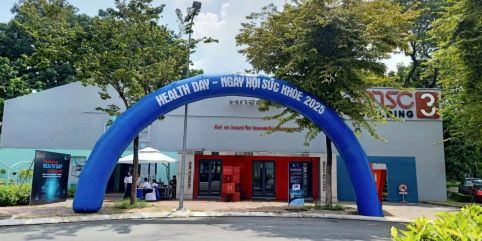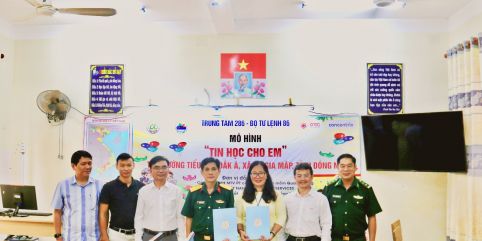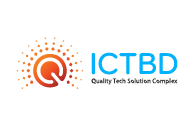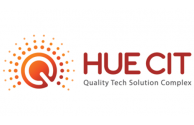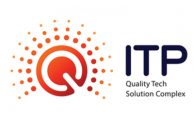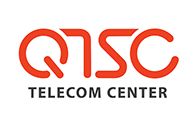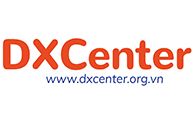Part 3: Catching up with industry 4.0 trends (2016 – 2020)
With the recognition of the international community, its prestige and inherited foundations, QTSC has adjusted its strategies in the 2015-2020 period to not only become a hub for producing and exporting software but also learn from technological achievements around the world to serve the socioeconomic development of HCM City and the whole country.
Reaffirm the role of a technology pioneer
After QTSC was established in 2001, it spent the first 10 years on building the software park. This was the time for QTSC to test the policies and models for its direction and core value. QTSC has really thrived since 2011, with a focus on its initial core value of producing and exporting software and attracting businesses in this sector.
According to Tran Huu Dung, chairman of QTSC, to meet this goal, the telecommunication and information technology (IT) infrastructure at QTSC is one of the important foundations that facilitate the enterprises’ production and exports of software, attracting investment into the park. Strong investment in the telecommunication and IT infrastructure has been realized, with modern security technology and high-speed Internet to meet the demand of software producers and IT companies. During its operations, QTSC has continuously improved its manpower and invested in the latest advanced technologies such as the cloud computing data center, which used state-of-the-art security solutions to ensure information safety for HCM City’s e-government program.
During 15 years of development, QTSC has attracted many IT companies, including local and foreign giants such as KDDI, SPS, TMA, Hitachi Vantara Vietnam and Vina Data with over 20,000 workers. The businesses have built and provided more than 250 products, services and solutions for various sectors. The products and solutions have been exported to over 20 countries such as the United States, Japan and European countries.
Since 2016, the model of QTSC has been adjusted in the context of the boom of many new technologies. According to Lam Nguyen Hai Long, CEO of QTSC, the park cannot only focus on outsourcing software. It should integrate with new technology trends of the Fourth Industrial Revolution (Industry 4.0).
Together with the stable development of the business community at the park, the increasing number of software engineers and software companies over the past years has been the motivation for QTSC to transform itself for integration with Industry 4.0 trends.
Since 2016, QTSC has stopped calling on investors to invest in the technical infrastructure but focused on dealing with investors who did not comply with the proper procedures and retrieving land lots from investors with weak capacity. These land lots will be prioritized for software production and R&D. Besides this, to improve the service quality and ensure general standards, QTSC has applied strict screening criteria on the investors. Therefore, the number of investors at QTSC was stable during this period.
The first smart city model in Vietnam
During its development, QTSC has met many difficulties and challenges to manage a software city such as ensuring that the infrastructure system is always ready, ensuring security and improving its capacity to meet the increasing demand of businesses and people studying and working at the park. QTSC has sought management solutions to address these challenges and catch up with international integration trends and foreign technology zones.
In 2016, QTSC leaders were determined to develop the park into the first smart city in the country. This was the orientation for QTSC to improve its operations and serve the businesses better.
QTSC has proactively applied technologies to resolve management challenges. QTSC has gradually digitalized its management activities to become smarter and develop into the first smart city model in the country.
The digitalization process started from simple activities such as digitalizing the data of infrastructure and power and lighting systems to complicated activities such as digitalizing the management procedures to ensure smooth operations, concentration and efficiency.

According to Vu Quang, Deputy CEO of QTSC, the park has applied various technologies for the digitalization process such as Geographic Information System (GIS), Smart building, Face search, Car detector, Short Message Services (SMS), Operation Management System (OMS), Helpdesk, Customer Relationship Management (CRM), Smart grid, Smart water metering system, Accounting reporting system and Free wifi system. Following international integration trends, QTSC has applied technology solutions and more than 20 management systems, which help the park become smarter and develop into the first smart city model in the country. Lam Nguyen Hai Long said QTSC has attracted businesses with outstanding IT foundations and telecommunication infrastructure and many engineers, enabling it to successfully integrate these applications.
These applications have helped QTSC reduce cost. “Digital transformation in infrastructure management has brought about significant achievements. The staff’s infrastructure management capacity and the internal environment/wastewater have been improved significantly, thus reducing operation and HR cost,” Vu Quang shared.
In the next stages, QTSC will integrate more applications into the system, which will be automatically programmed to give warnings in case incidents happen and create an automatic resolving process, helping increase the collaboration between related departments in processing the information and resolving the problems and improve the services for the customers.
From the initial achievements, QTSC has continued to utilize and develop more technology applications, integrate data and applications on one platform and move towards an open platform for the third party. QTSC is completing the QTSC Integrated Operation Center (IOC), which has been applied since early 2018. It is regarded as HCM City’s first pilot program to resolve problems in operating and developing the first and largest software city in Vietnam.
Based on these foundations, QTSC has joined the management board and assistance team of the scheme “Developing HCM City into a smart city in the 2017-2020 period, with a vision towards 2025” in line with Decision No. 4693/QD-UBND dated September 8, 2016 of the HCM City People’s Committee. The scheme focused on building the e-government, applying information technology to serve the citizens and businesses and solving problems related to social security, bringing a better life to people living in the city.
These activities have brought QTSC to the next level, becoming a smarter software city, moving towards a typical model of the country’s first smart city, and creating the foundations to help HCM City become a hub for innovation and entrepreneurship.
Lam Nguyen Hai Long expects that this system will be expanded, contributing to Vietnam’s smart city development goals. QTSC would like to share its experience and solutions to industrial parks, export processing zones and IT zones nationwide, contributing to the national digital transformation.

Replicate QTSC model to other cities and provinces
QTSC is recognized as a successful model and highly appreciated by international organizations. Localities nationwide have learned from QTSC to build their technology zones. The QTSC brand is internationally recognized, contributing to building the national brand for Vietnam’s IT and software sector. Many foreign delegations have visited the park to learn more about Vietnam’s IT and software sector.
To accelerate model transfer and help other localities shorten the building process, the HCM City government has asked the Department of Information and Communications to work with QTSC to expand the QTSC Chain. In 2016, the Government issued Decision No. 333/QD-TTg on piloting the establishment of the QTSC Chain. The QTSC Chain now has three members including QTSC, the Information Technology Park Vietnam National University – HCM City (ITP) and the Thua Thien Hue Center for Information Technology (HueCIT). Seven localities including Tien Giang, Ben Tre, Binh Dinh, Can Tho, Tay Ninh, Khanh Hoa and Binh Duong have planned to build technology zones to join the chain in the near future.
QTSC’s development goal is to successfully build the biggest software city model among eight software cities of the country, helping the city and the country as a whole attract more software investment.
Lam Nguyen Hai Long said the QTSC Chain is one of the innovative solutions of HCM City to develop the IT sector in the city in particular and the country in general. This model has also helped localities ride out difficulties when developing IT zones and software cities. Besides this, the chain helps enhance the members’ capacity to attract investment, take advantage of the strengths of each member and promote the collaboration between them to improve their competitiveness on the international market. Through this model, HCM City has proved its leading role in connecting other cities and provinces to develop a software city chain under the support of the Government.
The Information Technology Park Vietnam National University - HCM City (ITP) is the core of the chain’s entrepreneurship ecosystem, providing highly skilled IT workers. Therefore, at ITP, success is not measured by the businesses’ revenues but entrepreneurship indexes. Other members in the chain have collaborated with ITP to promote interaction and communications and attract more IT companies. ITP has also worked with other members to expand the chain to other localities.
From software city to science city
To maintain its leading role in the software industry of Vietnam, in 2016, leaders of QTSC began to transform the park to access new technologies and increase the value of products made by businesses at the park.
Besides attracting outsourcing and software exporting companies, QTSC has encouraged the businesses to boost research and experiment to create products and services meeting the demand of the potential local market, contributing to the country’s socioeconomic development.
Instead of attracting large and outsourcing companies, QTSC focuses on businesses that apply new technologies and have intelligent products, which help them effectively compete with foreign companies.
“QTSC is following the Tech Hub model, which provides technology solutions and trust-worthy software products. We expect to become a place where foreign experts will visit when they want to learn more about Vietnam’s software industry. In other words, QTSC is like a geographical appellation for Vietnam’s software industry on the global software map,” Lam Nguyen Hai Long stressed.
According to the QTSC leaders, in the long term, QTSC is transforming itself from a software city into a science city. It will be home to many businesses that develop technology products instead of outsourcing software only. A science city is evaluated by the content of inventions, intellectual property, research and “Make in Vietnam” products, not simply processed software.
To help the businesses transform, QTSC itself has to be an example. The park has collaborated with some organizations to research and apply information technology in agriculture. The Smart Agri system has been developed to help automatize greenhouse agricultural production.
Since 2018, QTSC has developed a laboratory covering more than 1,000 square meters, which focuses on new technologies such as blockchain, artificial intelligence and robotics. The laboratory will attract projects that apply these technologies and connect directly to overseas markets such as the Silicon Valley and Japan.
The businesses have actually transformed themselves to meet QTSC’s orientations. Initially, TMA Solutions only manufactured telecommunication software for the United States and Canada markets. Up to now, the company has reached out to other markets such as Europe, Japan and Australia and expanded to other sectors such as finance, banking, e-commerce, logistics, healthcare, education and automobile with nearly 3,000 engineers. During the Covid-19 pandemic, TMA has developed many applications that help protect the community health, including an app that reminds users to wear masks and check their body temperature.
According to Nguyen Huu Le, Chairman of TMA Solutions, the company has enjoyed incentives on corporate income tax, infrastructure and trade promotion. These incentives have helped the company increase its competitiveness in the early years and have more resources to invest in R&D, expand its infrastructure at QTSC and to other localities and join HCM City’s smart city projects.
Many other software companies at QTSC have also transformed themselves in line with the park’s orientations. Besides software, they have invested more for products serving various sectors such as electronics, communications and healthcare. Moreover, many Vietnamese companies in the park have changed from outsourcing for foreign companies to developing their own products and solutions.

“In the context of digital transformation, QTSC must also transform,” Lam Nguyen Hai Long said. To grow stronger in the future, QTSC needs to transform itself from a software city into a science city like in some other countries. To become a science city, QTSC must firstly develop into a tech hub, which gathers and connects resources, products and technology solutions in Vietnam.
In the next five years, QTSC would be a complete ecosystem in the IT sector, especially in software and some other industries. QTSC is attaching special importance to life science to integrate IT into healthcare and biology. Secondly, the park will continue to take advantage of its existing strengths to attract businesses with over 1,000 employees. Thirdly, QTSC will continue to develop innovation and research zones and promote collaboration with the businesses to create “Make in Vietnam” products.
QTSC is helping businesses at the park as well as industrial parks and export processing zones with digital transformation. QTSC has experience in digital transformation, a trend that businesses have to follow up.
HCM City’s smart city scheme also offers the opportunities for technology businesses at QTSC to access the market more easily as they can now join smart city programs and projects right in the city.
“We want our businesses to serve not only the local market but also foreign markets. Every year, some businesses at QTSC visit other countries to seek partnership. QTSC is also a destination for foreign delegations. We always take advantage of these occasions to connect local and foreign businesses,” Long said.
In the era of digital transformation, Industry 4.0 and global brand, QTSC has received more support and investment for transformation from a software city to a science city and promote the collaboration with other cities and provinces for joint development. With these efforts, QTSC aims to not only integrate with Industry 4.0 trends but also help the international community know more about Vietnamese people and their intelligence. These are long-term and hard tasks that QTSC does with pride!
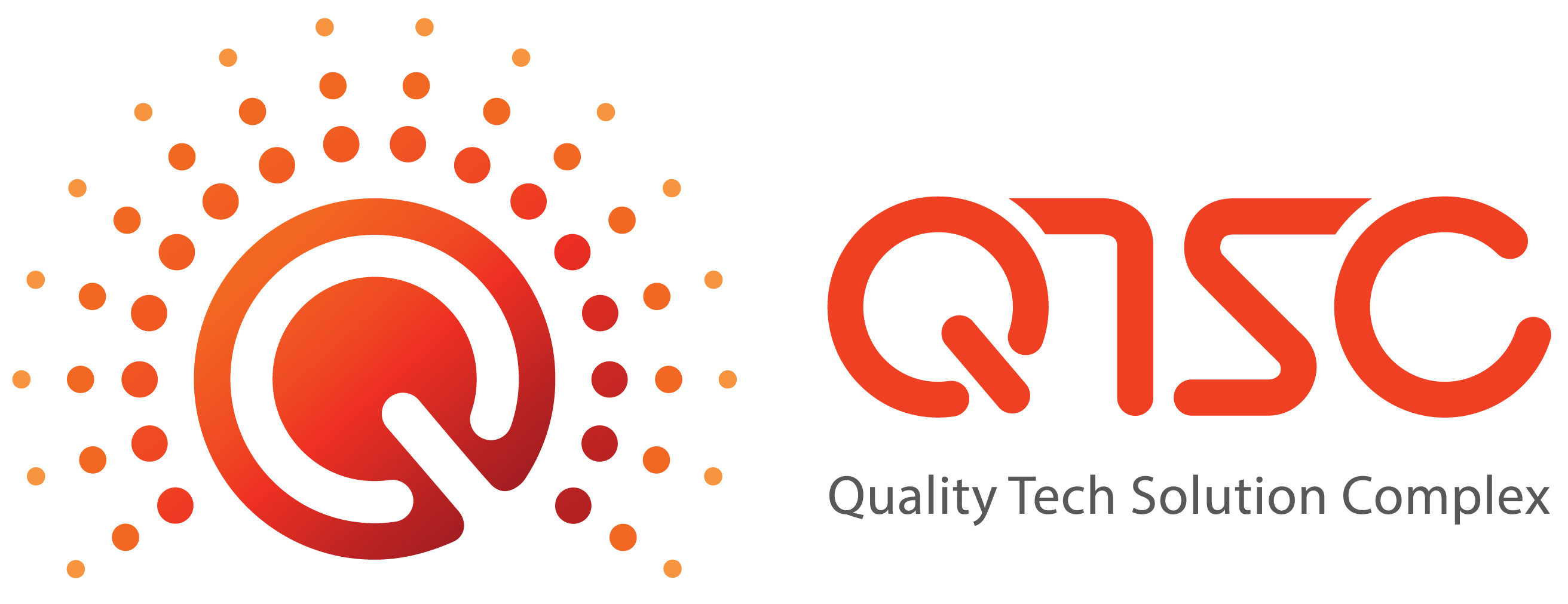




 Tiếng Việt
Tiếng Việt


